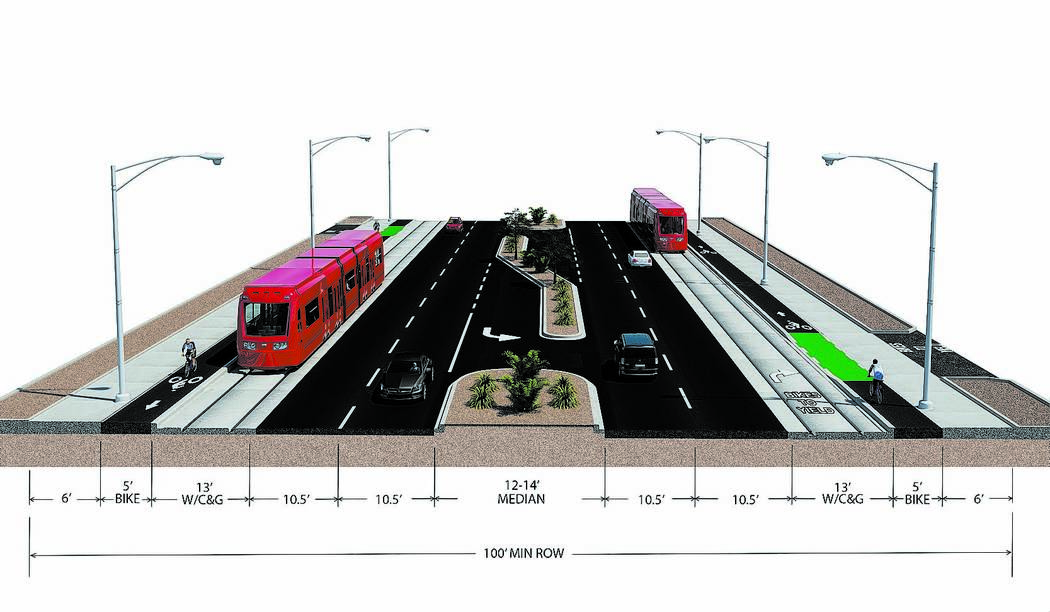EDITORIAL: Crucial element missing from light rail discussion
The Regional Transportation Commission wants public input on transit options for Maryland Parkway. It’s just leaving out one key detail — how to pay for its preferred and most expensive option.
RTC officials have been working for years to build light rail on Maryland Parkway. Their latest effort featured a 36-member committee, which last year recommended exactly that. No surprise. Government bureaucrats use committees to build momentum for policy goals they’ve already selected.
There is just one hurdle. How much would it cost to build light rail from the airport to Maryland Parkway and then northward along the corridor, including stops at UNLV, Sunrise Hospital and the Boulevard Mall? The proposed line would then head near the Golden Nugget downtown and end by University Medical Center.
Cost estimates for such a project are now at $750 million. Given the track record of mass transit endeavors, however, expect the actual pricetag to exceed $1 billion. That’s a lot of money. It’s also significantly more than the other two options under consideration: spending $335 million for bus lanes or $29 million for road upgrades.
As the Review-Journal’s Mick Akers reported, RTC officials are seeking public comment on the plans and assuring residents that a tax hike won’t be necessary. Sure. And how are taxpayers supposed to judge the feasibility of various options absent information about how each will be funded?
“We do have local funds already appropriated (fuel revenue indexing) to the project, but we want to go compete for funds at the federal level,” David Swallow, RTC’s senior director of engineering and technology, said. “We think this is a very strong project, and we want to compete for those funds.”
That’s a prayer, not a plan.
RTC hopes the federal government will provide hundreds of millions of dollars, and it doesn’t want to talk about what happens if it doesn’t.
But that’s easy to predict. RTC officials will turn to tax hikes or shortchanging road construction. That’s what voters were told they would get from hiking the gas tax in 2016.
There are two important aspects to every project — a cost/benefit analysis and how to pay for it. Without that second element, the light rail project isn’t ready for public consideration. This is a ham-fisted effort by RTC officials to skew the results to favor their pet project.
Urban residents in most parts of the country have shown for decades that they prefer their cars over transit. Instead of facilitating what the public wants, government planners keep looking for ways to build mass transit systems few people want to use.
Taxpayers shouldn’t be fooled. If light rail were the answer, RTC officials wouldn’t be so evasive about how they want to pay for it.

















